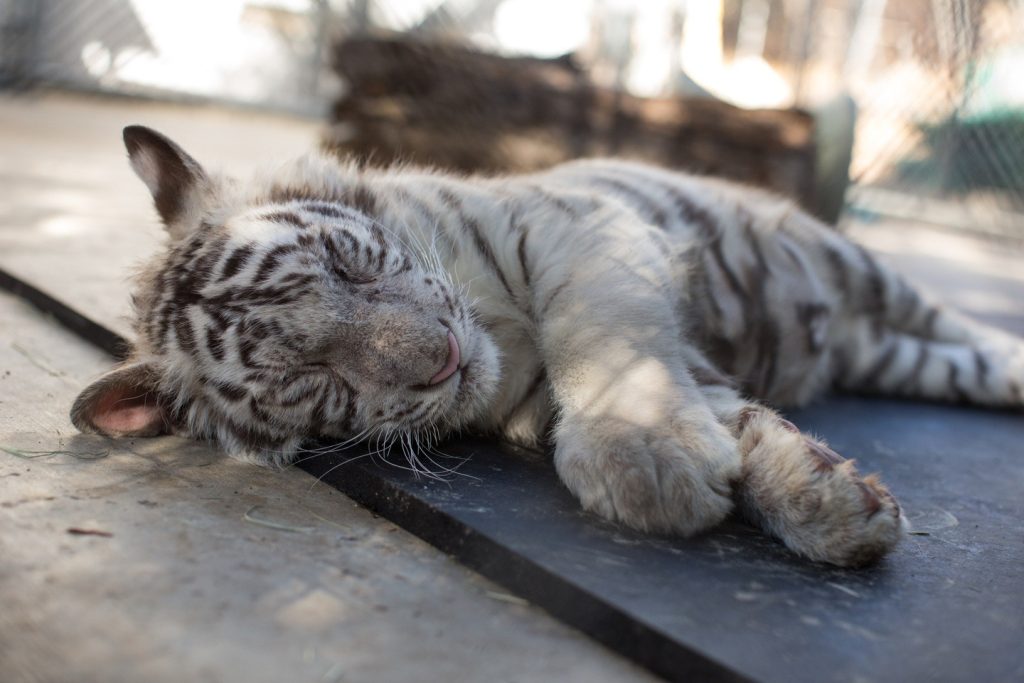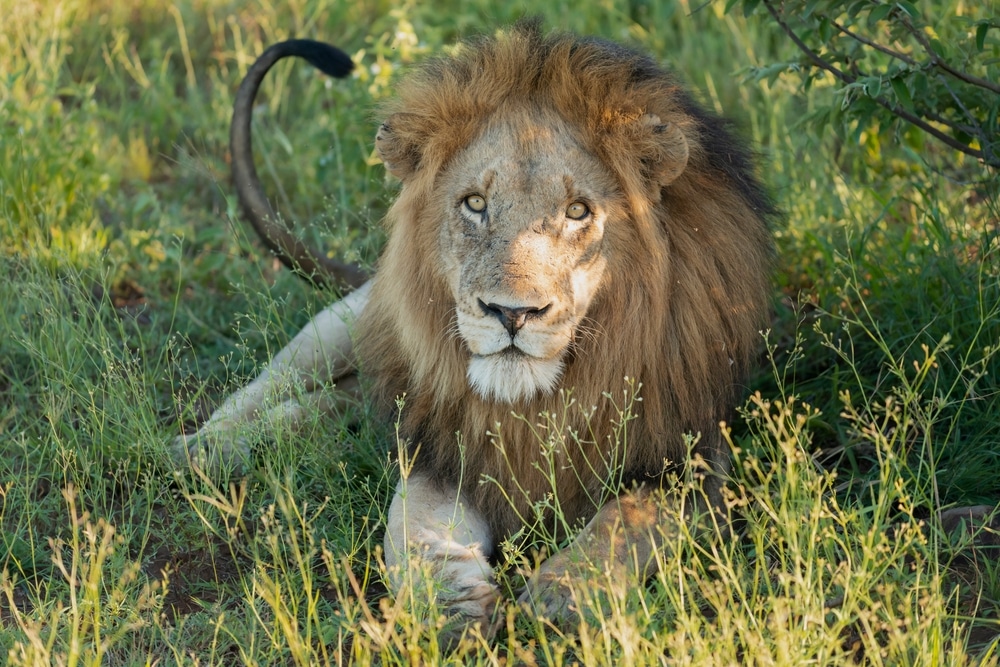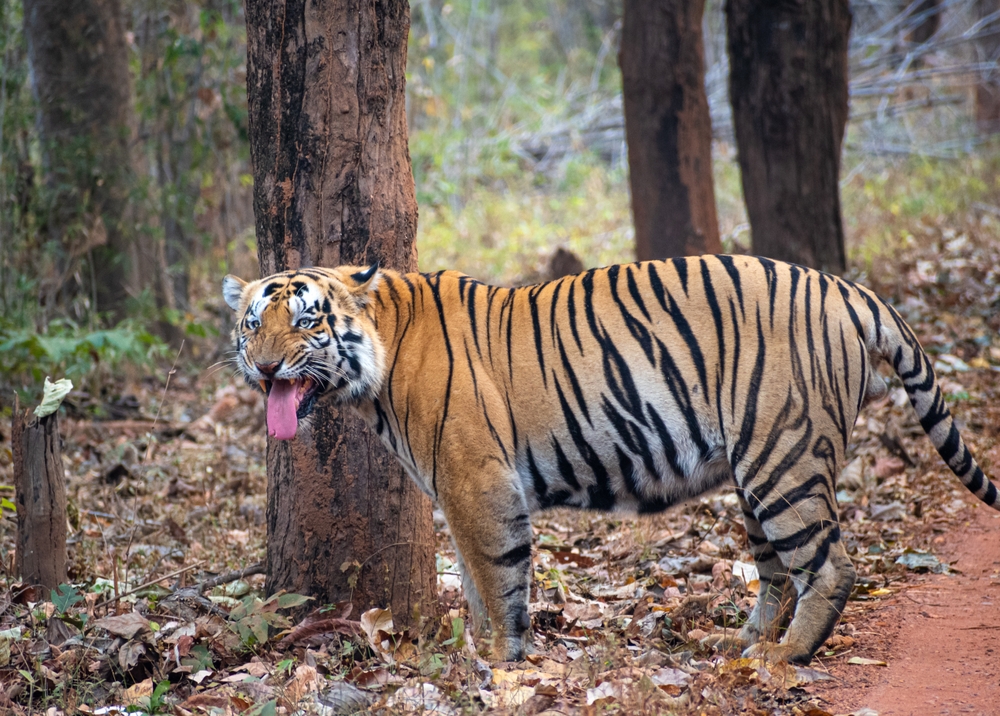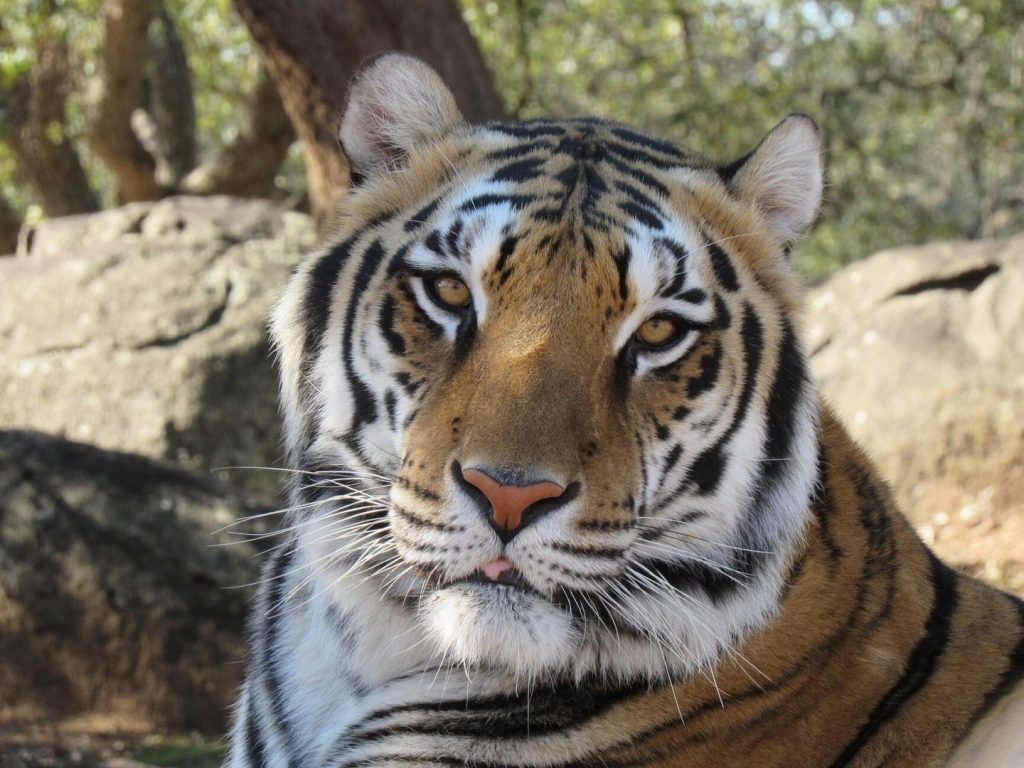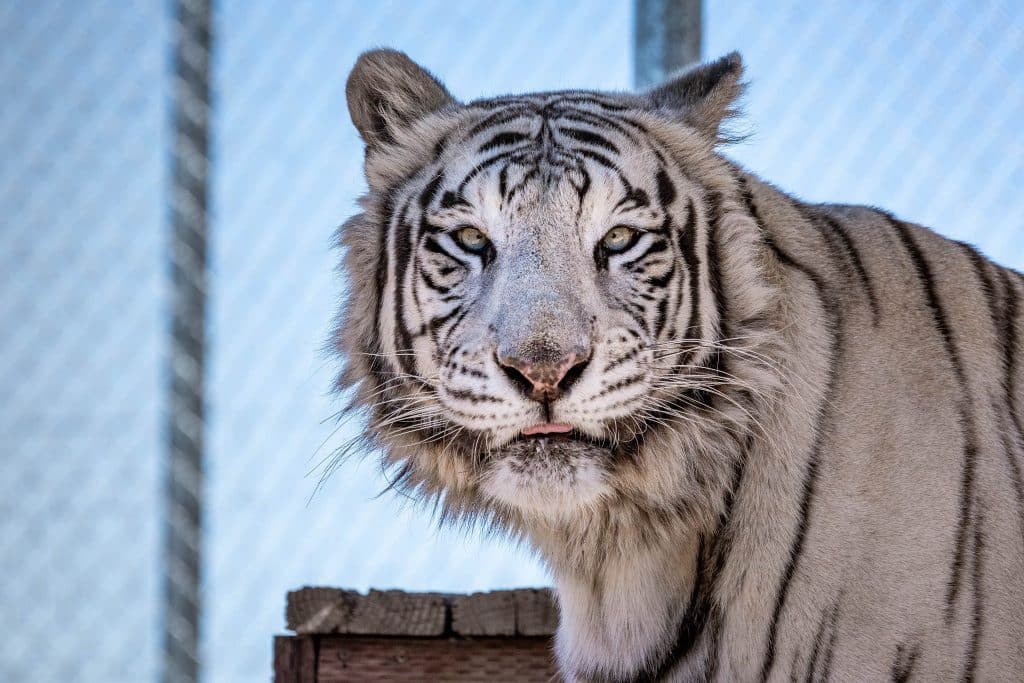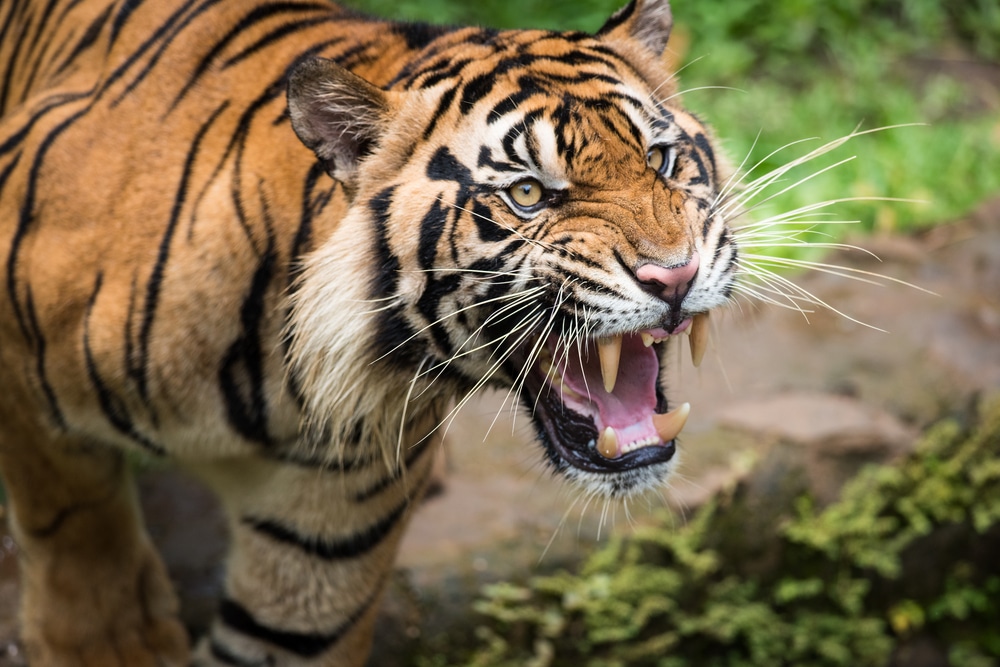From Netflix to Sanctuary: How Rescued Tigers Heal at Lions Tigers & Bears

When the Netflix series "Tiger King" aired, many viewers got a glimpse into the harsh realities behind roadside zoos and the exotic pet trade. The series highlighted significant animal welfare issues that wild animals, especially big cats, often endure. Unfortunately, these conditions were not unique to the park run by Joseph Allen Maldonado-Passage, also known as “Joe Exotic”; they happen in many unaccredited animal parks across the country.
Big cats suffer neglect and cruelty at facilities like Tiger King Park. Violations of the Animal Welfare Act occur regularly, including malnutrition, inadequate medical care, and cramped living conditions and worse. That’s why we have laws like the Endangered Species Act and the Big Cat Public Safety Act to protect these vulnerable animals and ensure they find a haven when rescued.
Jem and Zoe: The Story of Two Rescued Tigers
Tiger King Park was eventually closed down by federal authorities due to ongoing violations of animal welfare laws. Law enforcement, in collaboration with big cat rescue organizations including Lions Tigers & Bears, intervened to remove the animals living in deplorable conditions. Among those rescued were two female tigers named Jem and Zoe, who now call our Lions Tigers & Bears sanctuary their home.
Jem and Zoe arrived from Tiger King Park in Oklahoma, where they endured severe neglect under conditions that violated multiple animal welfare standards. Upon rescue, both tigers suffered severe malnutrition, stress, and physical ailments needing immediate medical attention. LTB’s veterinary team noted their poor health, which is evident from their underweight bodies and anxious behavior.
Bobbi Brink, founder of Lions Tigers & Bears, explained, “When Jem and Zoe arrived, their condition was heartbreaking. They were severely underweight, frightened, and traumatized. Our immediate priority was stabilizing their health and giving them a calm, secure environment to begin healing."

A Sanctuary Dedicated to Healing
Lions Tigers & Bears provides these rescued tigers with specialized care that prioritizes their physical and emotional recovery. Unlike their previous home, the sanctuary meets strict animal welfare standards and is accredited by the Global Federation of Animal Sanctuaries (GFAS) and the American Sanctuary Association (ASA) that monitor animal sanctuaries.
Jem and Zoe now enjoy nutritious diets formulated to address their previous malnutrition. Each meal helps them gain and maintain a healthy weight. Beyond nutrition, veterinary care at the sanctuary includes regular check-ups and treatments tailored to their needs, ensuring their continued improvement and good health.
Enrichment activities also play a significant role in their recovery. These activities encourage natural behaviors, keep the tigers mentally stimulated, and reduce stress. Jem and Zoe engage with various enrichment tools, from sturdy balls to platforms designed for climbing and lounging, helping them regain and maintain their physical strength and emotional stability.
Emotional Recovery and a New Life
Recovery for rescued tigers like Jem and Zoe goes beyond food and medicine. When they first arrived at Lions Tigers & Bears, they were visibly anxious. They paced, avoided interaction, and showed signs of deep emotional stress—a reflection of their environment. Their fear wasn’t just about new surroundings but years of uncertainty and neglect.
Our sanctuary staff gave them time, space, and consistency. There was no pressure to perform or engage, only gentle care and routine. Slowly, the signs of healing began to show. They started to eat regularly, rest without fear, and take an interest in their surroundings. With each day, they grew more comfortable. Today, Jem and Zoe are more at ease. They confidently move through their habitat, respond positively to caregivers, and show curiosity. All small but powerful signs that they are learning to trust again.
These visible changes remind us that emotional recovery is real and possible. It doesn’t happen overnight, but with patience and care, progress comes. Watching Jem and Zoe engage in natural behaviors like lounging in the sun, exploring enrichment items, and chuffing softly at staff makes it clear: this is what a second chance looks like. And it’s only possible in a place where their well-being truly comes first.
Ending the Exotic Pet Trade
Roadside facilities often exploit animals to turn a profit. They rely on public demand for interactions like tiger cub petting, selfies for social media, and more. These practices may appear harmless, but they come at a significant cost.
Tiger cubs are separated from their mothers too early, bred repeatedly to ensure a constant supply, and discarded once they grow too large or unmanageable. Many live in poor conditions, suffer neglect, or are euthanized when they are no longer useful. Some even engage in wildlife trafficking to meet the demand of people who use big cats as pets or for their body parts. This cycle reflects a broader issue of animal cruelty.
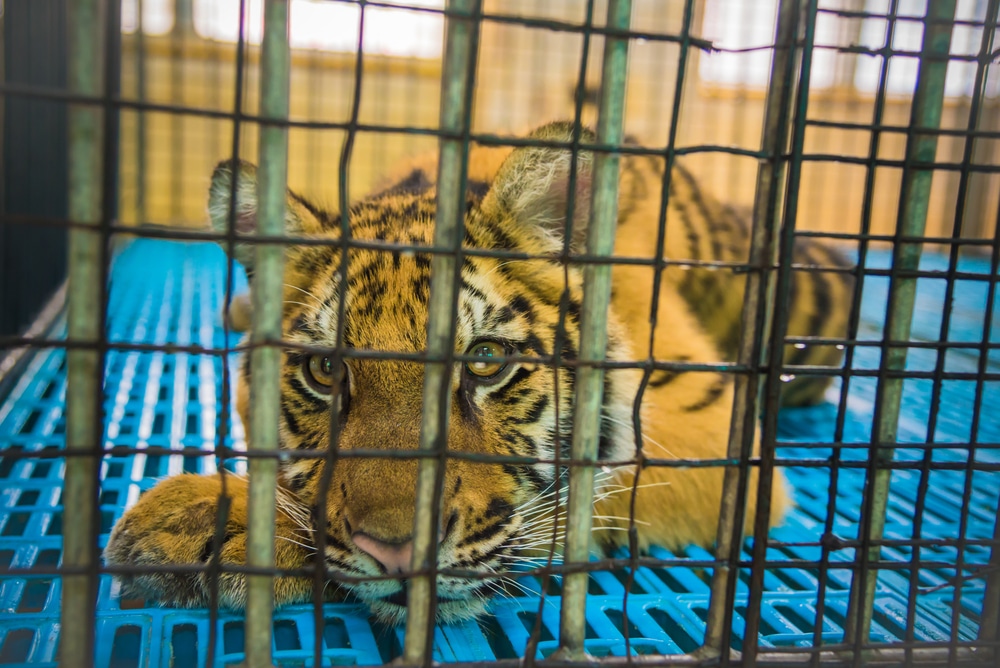
Facilities like the one run by zoo owner Joe Exotic capitalized on this cycle. With little oversight, profit outweighed animal welfare. Many of the animals were killed or went missing. These operations often disregard proper veterinary care, adequate space, and enrichment, putting wild animals in constant distress. This system is not rare—it reflects how the exotic pet trade prioritizes entertainment and money over ethics and animal welfare.
Accredited sanctuaries like Lions Tigers & Bears are working to end this exploitation. They do not breed, sell, or allow public contact with animals. Instead, they offer rescued animals safe, permanent homes where their physical and emotional needs come first. LTB follows a strict "NO CONTACT, NO BREED, NO SELL" policy. Our approach is centered on long-term well-being, not short-term gain.
The Big Cat Public Safety Act, passed in 2022, was a major step forward. It prohibits private ownership of big cats and bans public contact like cub petting. This law helps reduce irresponsible breeding and closes loopholes that have allowed animal abuse to flourish. Still, laws alone aren’t enough. Sanctuaries are essential partners in this effort. They care for the animals who are removed from unsafe environments and raise public awareness about why big cats do not belong in private hands.
Supporting Rescued Tigers
Jem and Zoe’s story shows what happens when care replaces exploitation. They are no longer part of a cycle of abuse. At Lions Tigers & Bears, they have space, nourishment, and peace. Their journey reminds us of what’s possible and why accredited sanctuaries deserve our continued support.You can support the mission of Lions Tigers & Bears by contributing through donations, sponsorships, or visiting responsibly to learn more about their critical work. Your support helps rescue animals with food, veterinary care, and enrichment activities essential to their healing and happiness.


